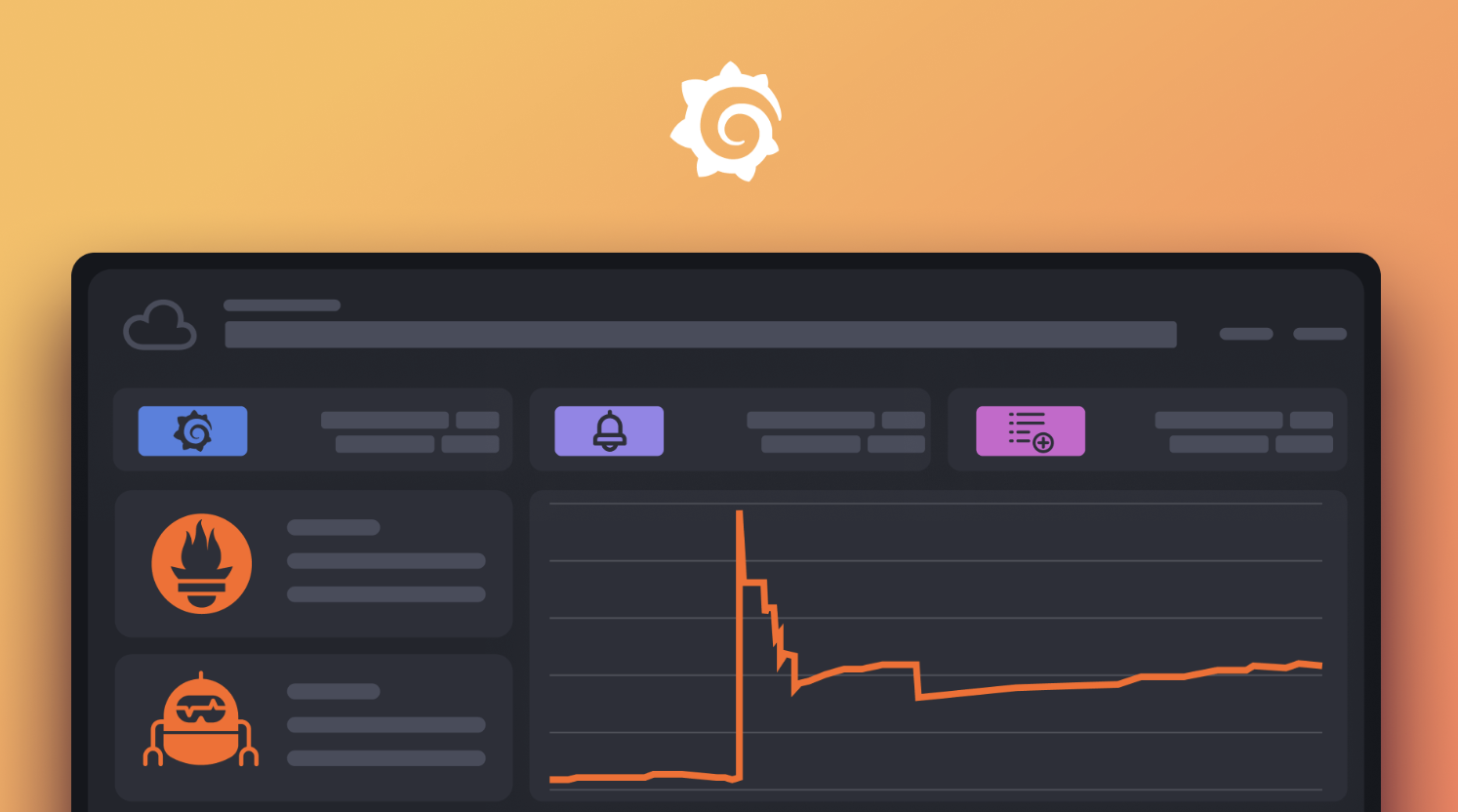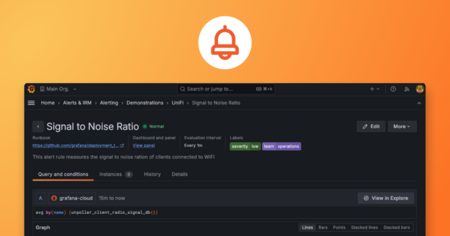Plugins 〉RunReveal
RunReveal
RunReveal data source for Grafana
Installation
For detailed instructions on how to install the plugin on Grafana Cloud or locally, please checkout the Plugin installation docs.
Configuration
In order to use this data source you must have an account with RunReveal that has a valid workspace. Navigate to create an account and get started.
Once you have created your RunReveal account and installed the plugin you can configure the data source. You will need an api token and the workspace ID of the workspace that you want to run queries against. To acquire this info navigate to your RunReveal settings page.
Provisioning
If you are using Grafana's new provsioning files to configure the data source, the api key must be base64 encoded (if not already done so) in the format :<key> where key is preceded by a colon.
Use the following example to set your provisioning file.
To configure the data source, use the environment variables RRDS_WORKSPACE_ID and RRDS_SESSION_TOKEN to set your workspace ID and the base64 encoded api key respectively.
apiVersion: 1
deleteDatasources:
- name: RunReveal
orgId: 1
datasources:
- orgId: 1
name: RunReveal
uid: 1
type: runreveal-runreveal-datasource
access: proxy
basicAuth: false
withCredentials: false
isDefault: true
jsonData:
workspaceId: ${RRDS_WORKSPACE_ID}
secureJsonData:
sessionToken: ${RRDS_SESSION_TOKEN}
Quick Start
The plugin includes a built in dashboard that can be imported to your Grafana environment.
When configuring the datasource, select the Dashboards tab to view the available dashboards and import them.
Building Queries
The query editor uses SQL queries to access your RunReveal log data. Your log data is stored in a ClickHouse database and must be valid sql based on their syntax.
Time series
Time series visualizations are selectable after adding a datetime field with the alias of time. Most queries will use the eventTime field when selecting time series data. All other fields will be treated as a value column based on the data type of the data returned. Here is an example query that could be written to get the number of readonly events per time interval.
SELECT $__timeInterval(eventTime) as time, readOnly, COUNT(*) as counts
FROM runreveal_logs
WHERE eventTime between $__fromTime and $__toTime
GROUP by time, readOnly
ORDER BY time
Multi-line time series
Grafana supports displaying multiple metrics on a single query. By default the query will display a separate metric for all numeric fields.
If you would like to split the data based on the values of a column you need to perform a transform on the query in Grafana. When adding a transform choose the Partition by values and select the columns that the data will be split on.
Tables
RunReveal stores your normalized events in a table called runreveal_logs. This table offers a handful of columns that can be searched on. Since events are all stored in the same table data can be filtered by the sourceType column. The raw event from this source is stored in json format in the rawLog column.
RunReveal also offers some secondary tables which split the rawLog column into a normalized data structure.
In order to view which tables are accessible to your RunReveal account and which columns are available to select, you can run the following queries on the Explore tab in Grafana.
show tables
DESCRIBE [table_name]
Macros
To allow for dynamic parts, like date range filters, the query can contain macros.
Here is an example of a query with a macro:
SELECT eventTime as time, sourceType
FROM runreveal_logs
WHERE time between $__fromTime AND $__toTime
| Macro | Description | Output example |
|---|---|---|
| $__fromTime | Replaced by the starting time of the range of the panel casted to DateTime | toDateTime(intDiv(1415792726371,1000)) |
| $__toTime | Replaced by the ending time of the range of the panel casted to DateTime | toDateTime(intDiv(1415792726371,1000)) |
| $__timeInterval(columnName) | Replaced by a function calculating the interval based on window size, useful when grouping | toStartOfInterval(column, INTERVAL intDiv(20000,1000) second) |
Grafana Cloud Free
- Free tier: Limited to 3 users
- Paid plans: $55 / user / month above included usage
- Access to all Enterprise Plugins
- Fully managed service (not available to self-manage)
Self-hosted Grafana Enterprise
- Access to all Enterprise plugins
- All Grafana Enterprise features
- Self-manage on your own infrastructure
Grafana Cloud Free
- Free tier: Limited to 3 users
- Paid plans: $55 / user / month above included usage
- Access to all Enterprise Plugins
- Fully managed service (not available to self-manage)
Self-hosted Grafana Enterprise
- Access to all Enterprise plugins
- All Grafana Enterprise features
- Self-manage on your own infrastructure
Grafana Cloud Free
- Free tier: Limited to 3 users
- Paid plans: $55 / user / month above included usage
- Access to all Enterprise Plugins
- Fully managed service (not available to self-manage)
Self-hosted Grafana Enterprise
- Access to all Enterprise plugins
- All Grafana Enterprise features
- Self-manage on your own infrastructure
Grafana Cloud Free
- Free tier: Limited to 3 users
- Paid plans: $55 / user / month above included usage
- Access to all Enterprise Plugins
- Fully managed service (not available to self-manage)
Self-hosted Grafana Enterprise
- Access to all Enterprise plugins
- All Grafana Enterprise features
- Self-manage on your own infrastructure
Grafana Cloud Free
- Free tier: Limited to 3 users
- Paid plans: $55 / user / month above included usage
- Access to all Enterprise Plugins
- Fully managed service (not available to self-manage)
Self-hosted Grafana Enterprise
- Access to all Enterprise plugins
- All Grafana Enterprise features
- Self-manage on your own infrastructure
Installing RunReveal on Grafana Cloud:
Installing plugins on a Grafana Cloud instance is a one-click install; same with updates. Cool, right?
Note that it could take up to 1 minute to see the plugin show up in your Grafana.
Installing plugins on a Grafana Cloud instance is a one-click install; same with updates. Cool, right?
Note that it could take up to 1 minute to see the plugin show up in your Grafana.
Installing plugins on a Grafana Cloud instance is a one-click install; same with updates. Cool, right?
Note that it could take up to 1 minute to see the plugin show up in your Grafana.
Installing plugins on a Grafana Cloud instance is a one-click install; same with updates. Cool, right?
Note that it could take up to 1 minute to see the plugin show up in your Grafana.
Installing plugins on a Grafana Cloud instance is a one-click install; same with updates. Cool, right?
Note that it could take up to 1 minute to see the plugin show up in your Grafana.
Installing plugins on a Grafana Cloud instance is a one-click install; same with updates. Cool, right?
Note that it could take up to 1 minute to see the plugin show up in your Grafana.
Installing plugins on a Grafana Cloud instance is a one-click install; same with updates. Cool, right?
Note that it could take up to 1 minute to see the plugin show up in your Grafana.
For more information, visit the docs on plugin installation.
Installing on a local Grafana:
For local instances, plugins are installed and updated via a simple CLI command. Plugins are not updated automatically, however you will be notified when updates are available right within your Grafana.
1. Install the Data Source
Use the grafana-cli tool to install RunReveal from the commandline:
grafana-cli plugins install The plugin will be installed into your grafana plugins directory; the default is /var/lib/grafana/plugins. More information on the cli tool.
Alternatively, you can manually download the .zip file for your architecture below and unpack it into your grafana plugins directory.
Alternatively, you can manually download the .zip file and unpack it into your grafana plugins directory.
2. Configure the Data Source
Accessed from the Grafana main menu, newly installed data sources can be added immediately within the Data Sources section.
Next, click the Add data source button in the upper right. The data source will be available for selection in the Type select box.
To see a list of installed data sources, click the Plugins item in the main menu. Both core data sources and installed data sources will appear.
Changelog
0.3.3
- Supply necessary information to setup and use Grafana provisioning files.
0.3.0
- Update auth flow to work with new RunReveal token format
- Update included dashboard to look at new tables
0.2.1
- Include RunReveal Default Dashboard with plugin
- Add proper error handling to query editor
- Add annotation query support
0.2.0
- Fix config page UI labels
- Update error messages when saving data source
- Remove console.logs that were used in testing
- Renamed plugin slug to match Grafana naming conventions
0.1.4 (Unreleased)
- Fix error when no records returned from query
- Update readme
- Update packages with known vulnerabilities
0.1.2 (Unreleased)
Initial release.







